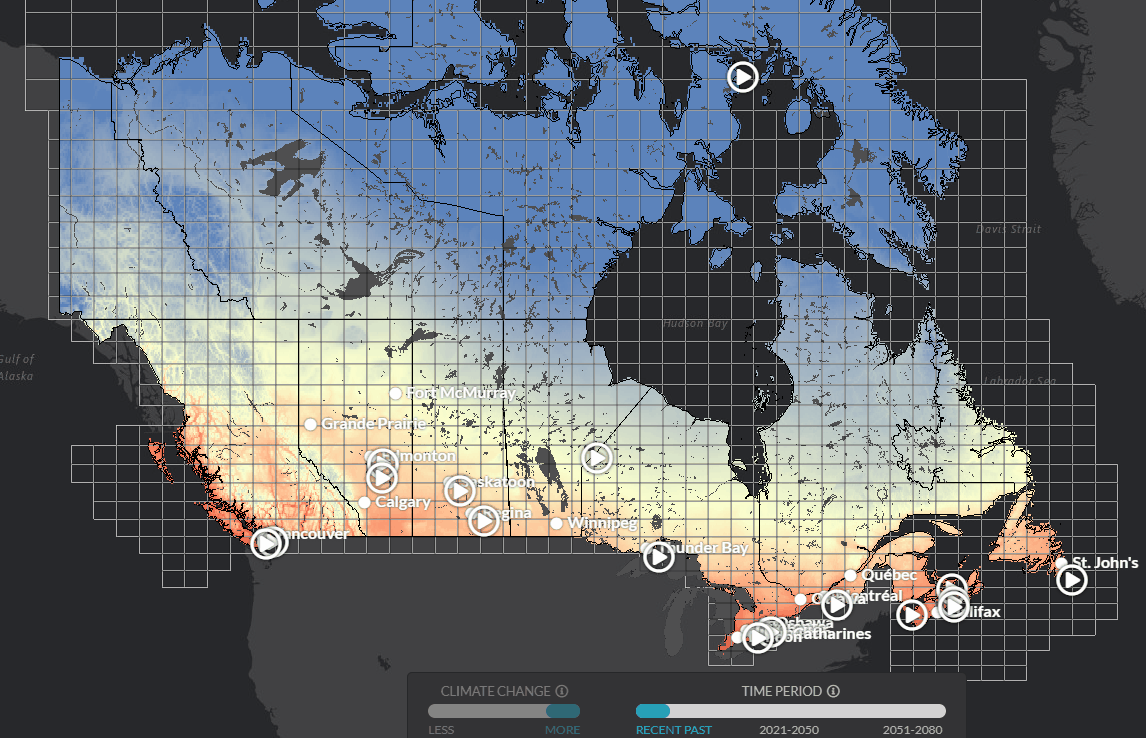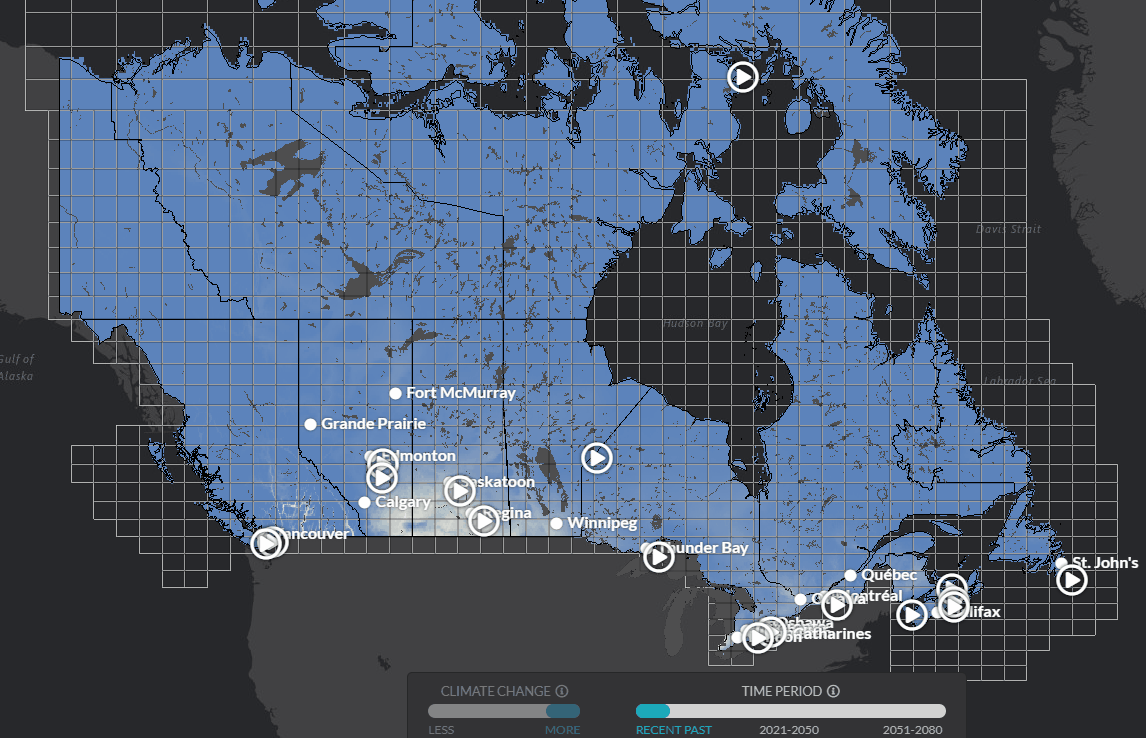Mean Annual Temperature: A Warming Nation
Very Hot Days (+30°C): A Changing Summer Landscape
Frost-Free Season: A Longer Growing Window
By the end of the century, many parts of southern Canada could gain 30 to 60 additional frost-free days annually. That’s nearly two more months of potential growing time—and more time for pests and pathogens to thrive.
While extended growing seasons may benefit certain crops, they also present new agricultural challenges. More weeds, invasive species, and insect-borne diseases will require new strategies and adaptations. For urban ecosystems, the changing timing of plant blooming and animal migration could cause ripple effects across food webs and local biodiversity.
Future Scenarios for Major Cities
To better understand how these changes might unfold, here’s a snapshot of projected outcomes in select Canadian cities, based on high-emissions scenarios from the Prairie Climate Centre:
- Toronto: Summers by the 2080s may resemble today’s St. Louis—hotter, more humid, and marked by frequent heat waves.
- Vancouver: Warmer winters and less snowfall in surrounding mountains may threaten water supplies and impact snow-dependent industries like skiing.
- Calgary: Greater wildfire risk and drier conditions may coincide with a longer growing season—an opportunity for agriculture, if water is well-managed.
- Yellowknife: Northern cities are warming nearly twice as fast as southern ones, with significant consequences for permafrost, wildlife, and infrastructure.
- Montreal: Projected to see more than 40 Very Hot Days per year by 2080, raising health concerns in densely populated areas with limited green space.
These examples highlight the need for urban planning that embraces resilience—from cooling infrastructure to climate-smart housing and emergency response systems.
Canada’s Response to a Warmer Future
As the climate shifts, adaptation efforts are already underway. Across the country, municipalities, industries, and community organizations are preparing for a hotter, more unpredictable future. Key strategies include:
- Urban greening to combat heat island effects
- Energy-efficient buildings with better insulation and cooling systems
- Resilient agriculture, including climate-ready crops
- Improved water management for both drought and flood events
- Public health outreach for extreme heat events
These solutions aim to reduce risk while enhancing quality of life. Many are scalable and relevant to other nations facing similar climate challenges.
Helpful Tools and Products for a Hotter World
For individuals looking to adapt to warmer conditions—whether in Canada or elsewhere—here are a few tools worth exploring (affiliate links from Amazon):



This post may contain affiliate links. As an Amazon Associate, I earn from qualifying purchases.